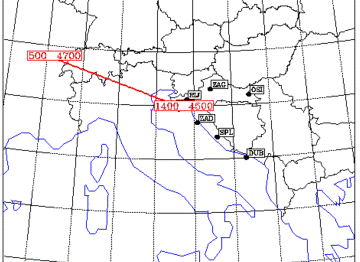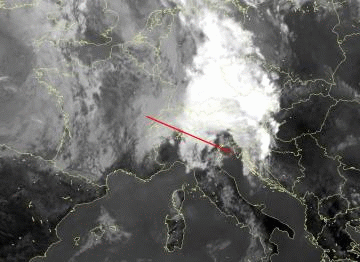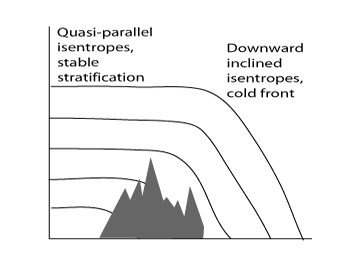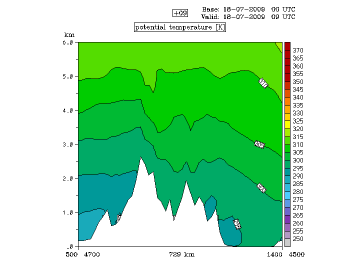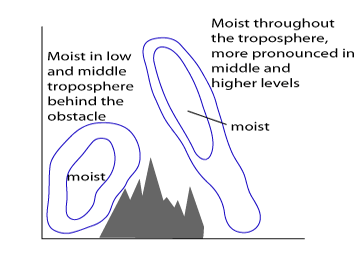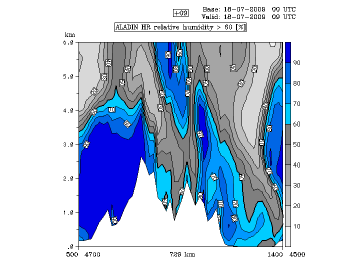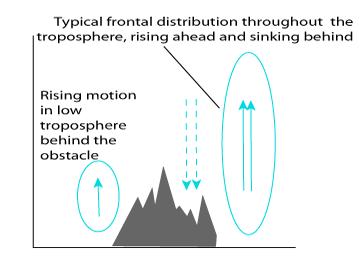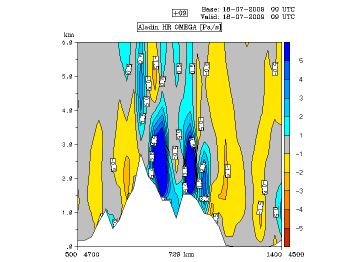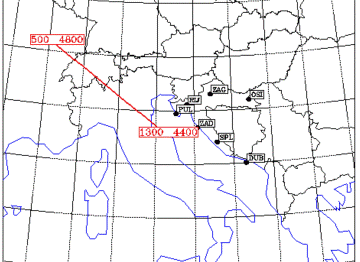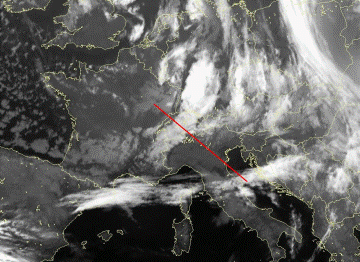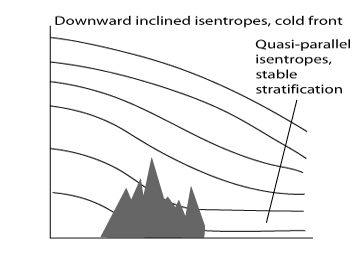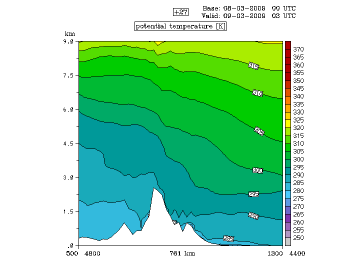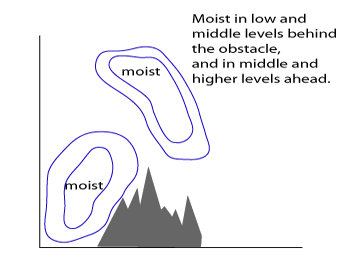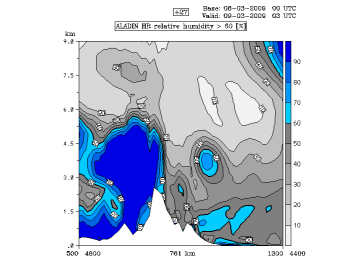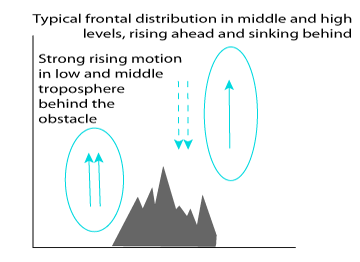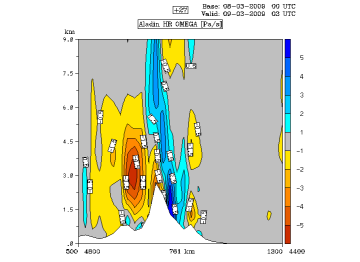Typical Appearance In Vertical Cross Sections
Front Delay
Because the spatial resolution of the global ECMWF model is not high enough to capture the fine structures of the atmosphere over and around the mountain, vertical cross sections of meso-scale model ALADIN are used.
- Isentropes show the characteristics of a typical cold front - a downward inclined (frontal) zone shows a part of the cloudiness that passed over the Alps. Quasi-parallel isentropes behind the mountain chain indicate the stable stratification at the windward side of the orographic barrier
- Relative humidity, in accordance with cloud pattern
- Omega: strong upward motion at the leading edge of the frontal zone and a pronounced sinking behind it clearly shows that the upper part of the front progresses to the west more or less undisturbed. Within the clouds kept behind the mountain chain the vertical motion is much weaker, but still mostly rising showing that there is still a part of the front that needs to pass the obstacle.
|
Position of vertical cross section
|
18 July 2009/09.00 UTC - Meteosat 9 IR image; position of vertical cross section indicated
|
|
|
18 July 2009/09.00 UTC - Vertical cross sections; isentropes: black
|
|
|
18 July 2009/09.00 UTC - Vertical cross sections; grey: relative humidity < 60%, blue: relative humidity > 60%
|
|
|
18 July 2009/00.00 UTC - Vertical cross sections; blue; omega > 0 (downward motion), yellow; omega < 0 (upward motion)
|
Decoupling of clouds at different heights
Analysis of vertical structure of the atmosphere in a case of decoupling of clouds at different heights is again presented through vertical cross sections of a LAM model.
- Isentropes show the characteristics of a typical cold front - a downward inclined (frontal) zone shows a part of the cloudiness that passed over the Alps. Quasi-parallel isentropes ahead of the mountain chain indicate the stable stratification in the area not jet reached by the front
- Relative humidity, in accordance with cloud pattern; high clouds already passed, a part of middle too, and the rest of the clouds (mostly low) are retained behind the obstacle
- Omega: a typical frontal distribution of vertical motion can be found in the middle and upper levels. However, even stronger ascent behind and over the Alps indicates there is still a significant part of the frontal cloud which needs to pass the barrier.
|
Position of vertical cross section
|
09 March 2009/03.00 UTC - Meteosat 9 IR image; position of vertical cross section indicated
|
|
|
09 March 2009/03.00 UTC - Vertical cross sections; isentropes: black
|
|
|
09 March 2009/03.00 UTC - Vertical cross sections; grey: relative humidity < 60%, blue: relative humidity > 60%
|
|
|
09 March 2009/03.00 UTC - Vertical cross sections; blue; omega > 0 (downward motion), yellow; omega < 0 (upward motion)
|
